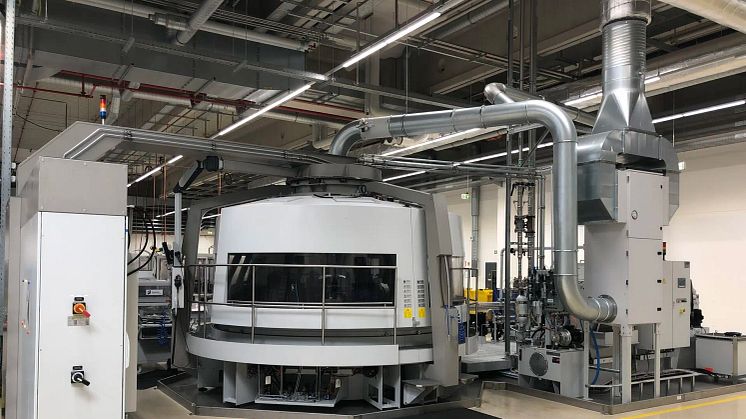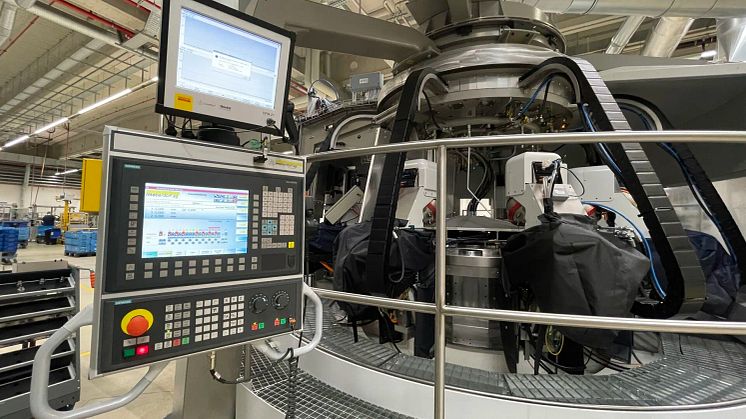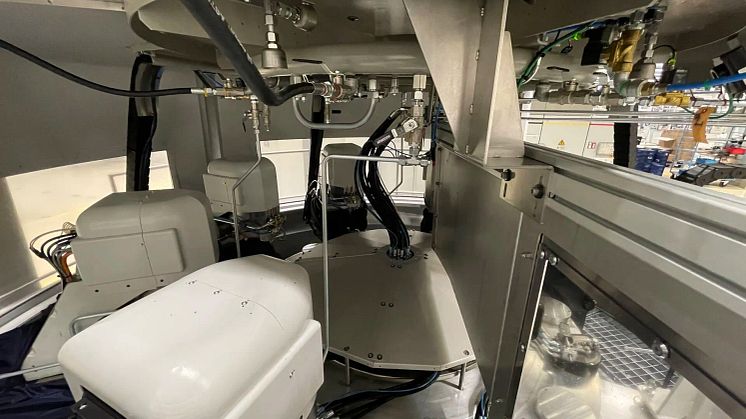
Press release -
Make the world go round: 7 facts about rotary transfer machines
Hundreds of thousands of throttle valves for diesel injection systems are manufactured every year. The same applies to the cylinders and keys of a locking system or plugs in the electronics industry. All these metal parts must be manufactured to the nearest micrometre, and various machining processes are required to achieve this. Here are seven facts about why rotary transfer machines are the preferred choice for demanding workpieces in high quantities.
A rotary transfer machine is a CNC machine tool for machining metal parts. All processing steps – turning, milling, drilling, gear cutting, broaching, slotting, tumbling, honing, grinding and assembling – can be completed in a single process step. The workpiece is clamped onto a rotatable indexing table and is machined horizontally and vertically all around by up to 20 process stations, each equipped with up to three tools.
Fact 1: Rotary transfer machines are micro-precise.
Repeat accuracies of 3 μm are standard for rotary transfer machines. But how does the machine achieve such high precision with ever-changing processes? The solution: a trailing plate. The workpieces to be machined are not clamped onto a fixed chuck, but onto a pallet. A drag plate transports these in the rotary transfer machine from station to station and sets the workpieces down within µ-accuracy. When placed in the zero-point clamping system, an accuracy of ± 1 µm can then be achieved. The indexing time takes only about 2.5 seconds.
Fact 2: Rotary transfer machines are fast and guarantee a high throughput.
Since up to 20 stations process several components at the same time, idle times are reduced to a minimum. In addition, the loading and unloading process is automated. This allows a rotary transfer machine to work up to 20 times faster than a machining centre. No other machine tool can achieve such a high production rate.
Fact 3: Rotary transfer machines enable maximum flexibility in production.
Due to the high number of spindles, components can be machined with many different tools simultaneously, thus enabling maximum flexibility. In addition, it is possible to adjust the system at any time to new production challenges, making it suitable for a variety of products. Furthermore, various metals can be machined: steel, brass, aluminium, copper etc. This opens up a wide range of industries where rotary transfer machines can be used.
Fact 4: Rotary transfer machines are widely used.
Wherever demanding workpieces need to be manufactured with high precision and in large quantities, rotary transfer machines are used. These include mass production of metal parts for the automotive industry, for apparatus and fitting construction in hydraulics or pneumatics, for the electrical and electronics industry, as well as for the lock and mount industry.
In the automotive industry, for example, throttle valves and magnetic valves in diesel injection systems are manufactured in rotary transfer machines. Cylinder heads for high-pressure pumps or pump housings are also typical applications. In the electrical and electronics industry, copper, aluminium, and their alloys (e.g. brass) are mainly processed into plugs, sockets, terminals, sleeves, or contacts. Lock housings, locking cylinders, and keys are other examples of typical products from rotary transfer machines.
Fact 5: New rotary transfer machines are sustainable as they are energy-efficient.
Compared to a multi-machine production of the same component, the energy savings are enormous with a single rotary transfer machine production, as each machine would need to be supplied with energy separately. Newer rotary transfer machines are equipped with intelligent energy controls, so only the currently active stations are powered, which reduces energy consumption significantly. Compared to conventional machining centres, a rotary transfer machine requires only about half the energy – a decisive competitive advantage in times of high energy prices.
Fact 6: Rotary transfer machines are expensive, but the investment pays off.
Automated production with minimal personnel, high component control and process reliability, very high annual production volumes, and a minimum of four tools required for processing: If these are the requirements to be met, the purchase of a rotary transfer machine can be worthwhile compared to conventional machine tools. Other advantages over multi-machine production include lower investment, less space and personnel requirements, and shorter setup times. Fewer involved employees also mean more homogeneous component quality.
A factor that further minimises investment risk is the high production flexibility of the rotary transfer machine due to its modular design. With proper maintenance, they have a lifespan of well over 30 years, making them attractive for resale.
Fact 7: Rotary transfer machines are also available second-hand.
Due to production restructuring, well-maintained rotary transfer machines become available on the second-hand market time and again. At present, Surplex.com offers a brand new Imoberdorf imo-space rotary transfer machine with zero process hours, equipped with eight processing stations, a drag tray, and a glass scale for repeat accuracy up to 0.5 µm. As the name suggests, the imo-space design is a machine configuration with plenty of space. A maximum of 16 machining stations and ATC tool changers enable enormous production potential.
Surplex is known for its auctions of used machinery, with up to 55,000 industrial goods changing hands annually in over 800 auctions. However, Surplex.com also offers direct sales of individual, usually particularly outstanding machines. Almost 3,000 direct sales are handled annually by Surplex. The highest quality machines are not auctioned, but are offered on request. Surplex takes care of the marketing for the sellers using its international network and, if desired, organises logistics and commissioning for buyers.


About Surplex
Surplex is one of Europe’s leading industrial auction houses and trades worldwide with used machinery and equipment. The 16-language auction platform Surplex.com records approximately 50 million-page views annually. More than 55,000 industrial goods are sold each year at more than 800 online auctions. The company is based in Düsseldorf (Germany) and has offices in 16 European countries. Over 220 employees from 20 different nations generate an annual turnover of more than EUR 100 million.



